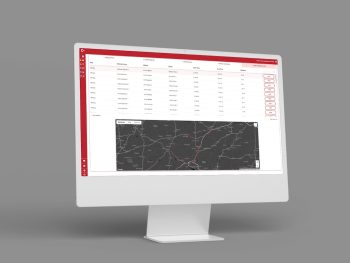New Synthetic Telematics tool allows businesses to run a virtual electric fleet
Fleet optimisation software provider Dynamon has launched its new Synthetic Telematics feature, which allows businesses to run a virtual electric fleet, modelling exactly how vehicles will perform in real-world conditions.
The technology, similar to that used by aerospace manufacturers and part of its Zero software package, can either take existing telematics data or create its own for commercial vehicle fleets that don’t have the information, or can’t apply it.
Using Zero’s extensive, bespoke database of almost all electric commercial vehicles, fleets and consultants can firstly spec exact vehicles in detail, including options such as battery size, tyre choice, weights, optional extras and accessories.
They can then create routes, using either existing journeys or by plotting new ones, and set up fleet movements in simulated scenarios that include real-world geographic, traffic and road conditions. Drop-offs, deliveries, rest stops or charging can also be added in, as well as driving styles and weather conditions.
Synthetic Telematics’ analytic and predictive algorithms show how an electric fleet would operate, based on the parameters entered.
These can then be adjusted to determine what a real-world fleet will really need to operate successfully, such as alternative charging methods, other vehicles, new routes or revised operational procedures.
Dynamon CEO Angus Webb commented: “Synthetic Telematics is game-changing because for the first time, fleets can now run their entire operation virtually before a wheel even turns for real. This allows them to make fully informed decisions in every area of procurement and planning, ensuring that the transition to electric is right first-time, avoiding expensive over- or under-speccing of vehicles and infrastructure.”
Virtual modelling ‘lays out all the data fleets will need’
The business, which secured a £4m investment from BP Ventures earlier this year, added that the ability to create telematics data for fleets that need was crucial to the proposition. Often, fleets may only have partial or incomplete data, or may only collect information on certain operational elements, such as drop-off times. Fleets can also struggle to take the data they have from petrol and diesel vehicles and use it to predict how electric vehicles may perform.
“The modelling available with Synthetic Telematics changes the way businesses can plan for the future, because it lays out all the data they will need. It shows how vehicles will perform on different routes, in different temperatures. The level of detail is remarkable,” Webb added.
Dynamon has done this through the creation of its own database of vehicle information, which included on-road testing for real-world efficiency figures and the calculation of factors such as the effect of certain options, such as different tyres or wheelbases. It can even model the effect of loads and wind direction on battery effectiveness.
“We’re now at a stage where Synthetic Telematics can take over from testing. Fleets often try electric vehicles out, but how rigorous can their testing procedure be? Often it can be quite anecdotal, and limited: nobody has the time and money to test all EVs on every route, in all conditions. With Synthetic Telematics, you can do this,” said Webb.
As part of the development of Synthetic Telematics, Dynamon undertook its own testing of vehicles on routes and then ran the same trials virtually, to ensure that the results through Synthetic Telematics were accurate.
“What we saw was that the results of the modelling were remarkably similar, producing every data point a fleet would need. So, for example, Synthetic Telematics can model how a particular EV would perform if the route was on a Monday morning during rush hour, with a full load, in winter, showing efficiency at any point on a specific road,” said Webb.
“Without this incredible level of detail, many fleets are doing fairly basic calculations on EV performance, taking battery size, approximate consumption and distance, and coming up with a number for range, charging need and cost. Synthetic Telematics, however, can show where batteries are being depleted most on a particular journey – perhaps because it is especially hilly, or has a lot of stop-start driving – allowing fleets to reroute if necessary to improve range, or choose another vehicle.
He summed up: “Synthetic Telematics will change the way fleets move to electric. It allows them to be sure of the type of charging they will need, which vehicles to choose and how to adapt their working operation to accommodate electric. And they can do all of this in a risk-free virtual environment, saving them time and money and ensuring when they do transition to electric, it is right, first-time.”








